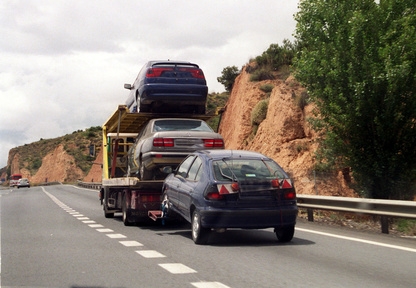
If you are a motor-home owner or ever find yourself in the unfortunate position of having your car broken down, knowing how to safely tow a vehicle will be an invaluable skill. You will be glad, for example, that you invested in a tow bar and were able to escape what are often exorbitant tow truck rescue charges. You will also have spared yourself any embarrassment by towing it yourself. Adhere to a few simple rules and safety procedures and towing a vehicle using a tow bar should prove a straightforward task.
Check the tow bar. You must ensure the tow bar is mounted correctly and securely. Read the drivers manual of the tow vehicle to ensure it is capable of towing the required weight. If the tow bar is not yet fitted, the drivers manual will provide basic instructions of where to find the mounting holes.
Put the vehicle in neutral. With the gears locked, the vehicle being towed will be difficult and dangerous to move - taking the vehicle out of gear will prevent it from getting damaged.
Do not allow passengers in the vehicle. It is dangerous and illegal for anyone to ride in the vehicle being towed using a towbar.
Inform other travelers. Use a sign on the rear of the vehicle to make other travelers aware it is being towed.
Keep your speed to a minimum. Driving fast or erratically when towing a vehicle is dangerous. The greater the speed, the more strain is placed on the tow bar and the less control you have over both vehicles. Air on the side of caution - only tow a damaged car the minimum distance required.
Adjust your driving accordingly. Go Sail recognizes "two of the most important things to have when you tow are basic common sense and the ability to adjust your driving." With a vehicle in tow, and the extra weight, your vehicle will respond differently. Turning should be done at half speed, acceleration should be gentler, allow more stopping distance, and when changing lanes, remember to allow enough space for both vehicles. When towing, everything you normally do while driving needs to be done at about half the speed when compared to driving without a trailer. When you turn, do it slower. When you accelerate, do it more cautiously. When you brake, allow yourself more space in which to stop. And when you change lanes, remember to allow room for both your vehicle and the trailer.